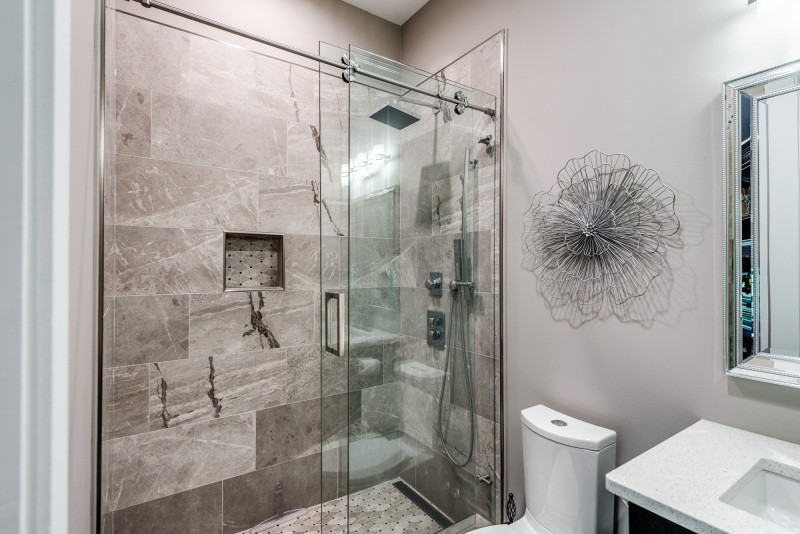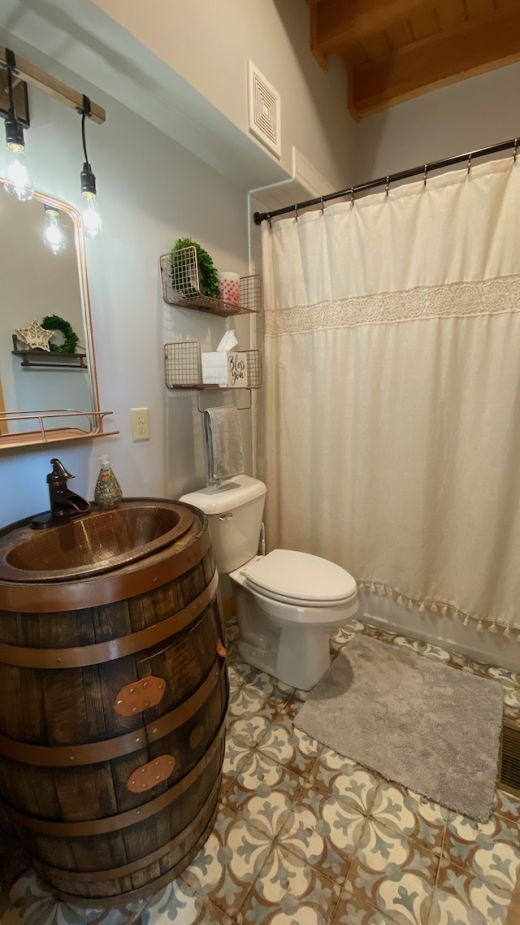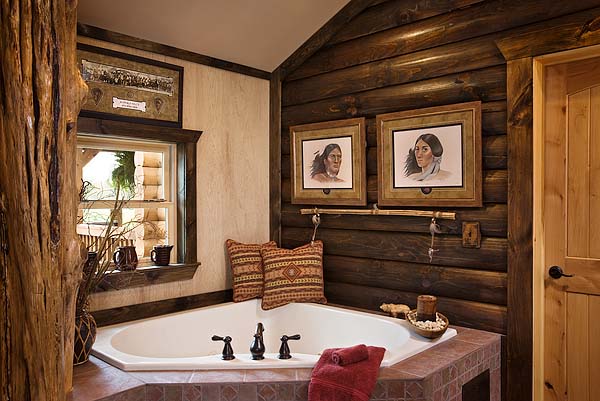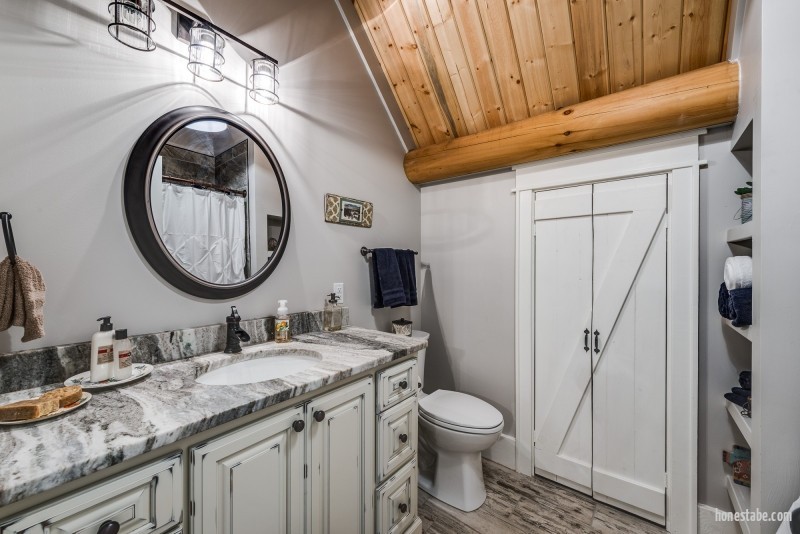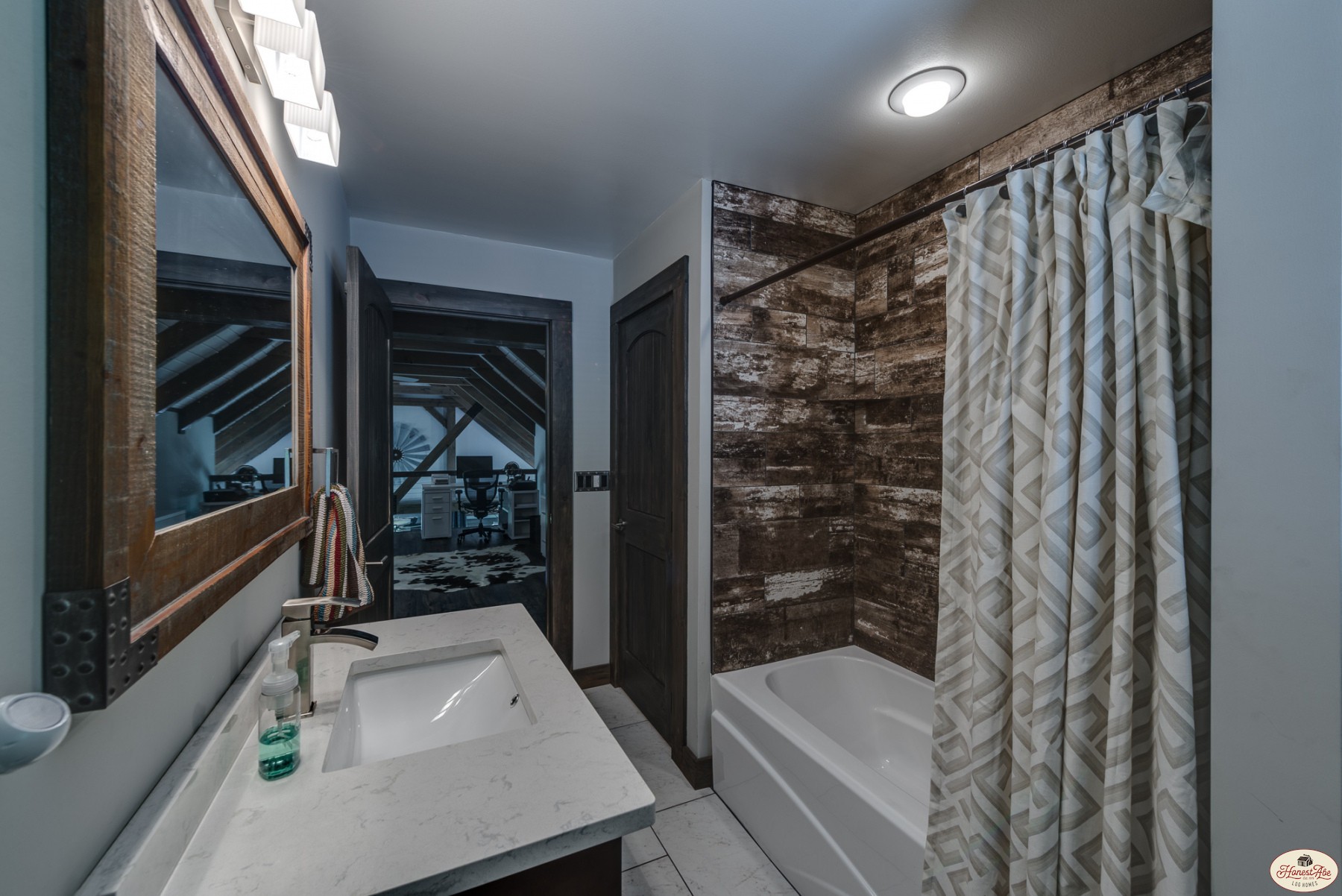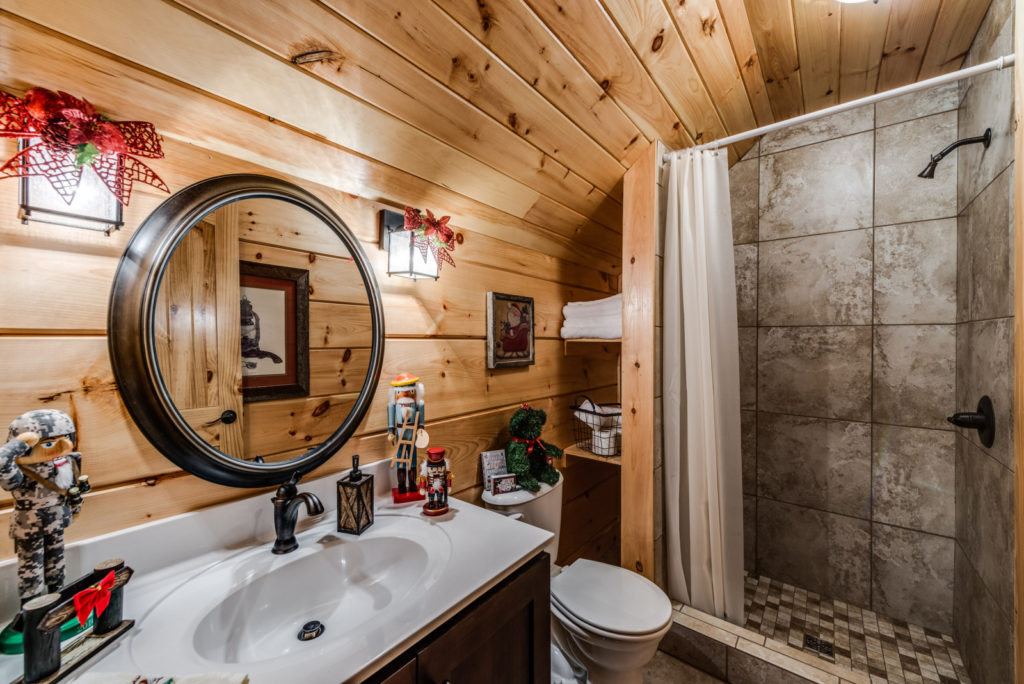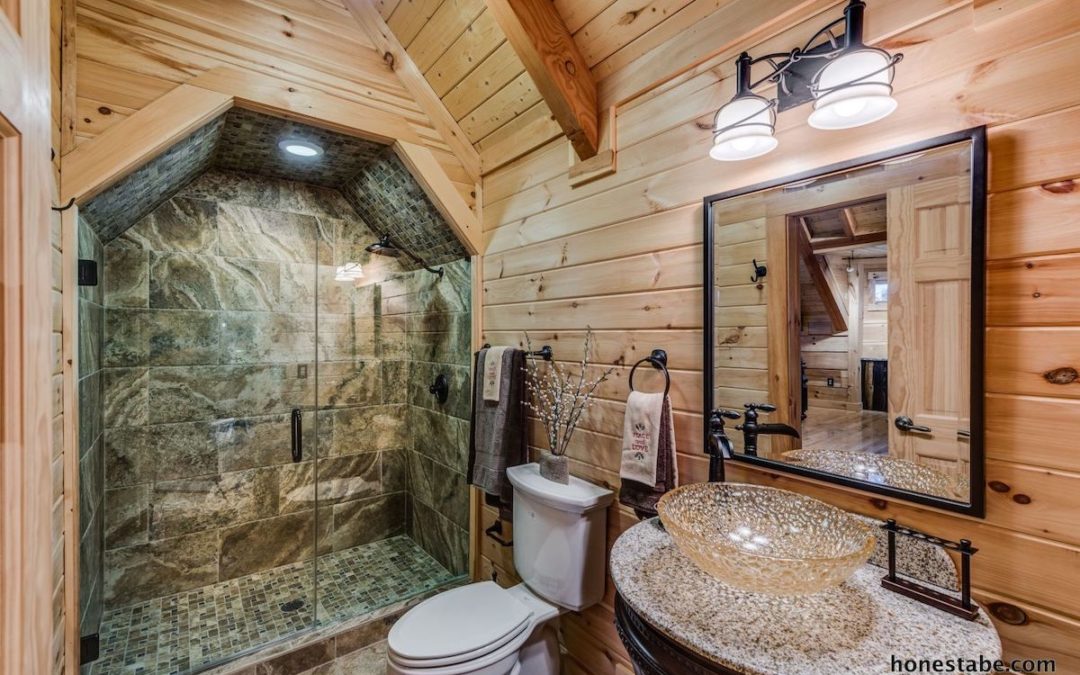People considering log homes almost always talk about the expectation that guests will come for extended visits. Sometimes it is the hope for adult children and grandchildren to pop in for a week. And just as often, it is friends from the “old neighborhood” or community who homeowners hope will not disappear with the move to log home living. With the hope for guests, there is a need to plan for how they will be incorporated into the home’s floor plan.
For most homeowners, the design of the master bath is executed with tremendous thought and detailed planning. Honestly, we all know what feels luxurious and soothing when it comes to a long soak, a rainfall shower, a space to destress with or without a mirror and, frankly, we would all probably like to ditch the space taken up by the scale.
When it comes to the guest bath, homeowners often spend very little time thinking about the materials and the features that will be offered there.
Here are some tips about getting started with imagining the guest bath of your log home.
Suggestion 1: Imagine the space as if it were in a hotel. The tricks used to make those bathrooms feel tranquil and inviting are the same ones that can be employed for guests in a home.
- Provide for warm lights over a mirror on the countertop.
- Allow for double sinks and consider making those above the counter sinks for spa-like. Install cabinets that allow you to keep your clutter and personal items hidden from guests.
- Provide accessible towel storage under the counter or on shelving designed for your guests to have easy access without opening drawers.
- Provide plugs for chargers, hair dryers and other travel devices.
- Add WiFi and potential for streaming music.
Suggestion 2: Provide for dressing space.
- Consider built in benches or dressing table height seated areas for you guests to dress
- Think about hanging space for clothes and space to steam or iron clothing.
- Guests need space to put their stuff – whether it is toiletries they’ve brought with them or clothing. Make sure that you have provided space for them.
Suggestion 3: Make the bath or shower accessible.
- While you may love the soaker tub in your master bath, you will find it a forward-thinking design element to have a bath and/or shower that is accessible for people who may need a walk arrangement. Whether it is for guests who are older or who need assistance or whether it is for you as you age in place, accessible baths are important features.
- Design with rainfall shower heads and attachments that can be hand-held for people who need some assistance.
- Consider building the wet area with grab bars. Gone are the days when these bars have to look industrial.
- Put a seated area in the shower stall
- Think carefully about the flooring materials to guard against slips.
Suggestion 4: Placement of the guest bath should be as versatile as possible.
- Consider a design that would allow you to put guest bedrooms and baths on a hallway which can be closed to provide them privacy and to provide you with your own privacy during their visit.
- Think about designing the guest bath to serve as a daily water closet for the family while transitioning to a full bath for guests staying overnight in your home.
Suggestion 5: Make lighting adjustable.
- While everyone loves natural and bright lights in a bathroom in the mornings, it is less welcome at bedtime. Provide different lighting over the countertop than in the bathing area.
- Plan for dimmers and adjustable lighting at night and consider adding night lights to help your guests find the bathroom in the unfamiliar space.
- Consider adding lighting in the shower stall and over the bath.
- Think about lighted and defogging mirrors.
Suggestion 6: Make the bathroom door easy to navigate.
- Older guests who walk with assistive devices will appreciate barn doors to the bathrooms. These are easy to slide with little effort and the doorways can be made wide enough to accommodate walkers and scooters without appearing to be oversized.
- If using conventional doors, consider slap handles and assure that the swing of the door allows someone with an assistive device for walkers or wheelchairs to navigate the room without having to open/close the door behind them.
– article by Amy Green, CSllc Consulting
